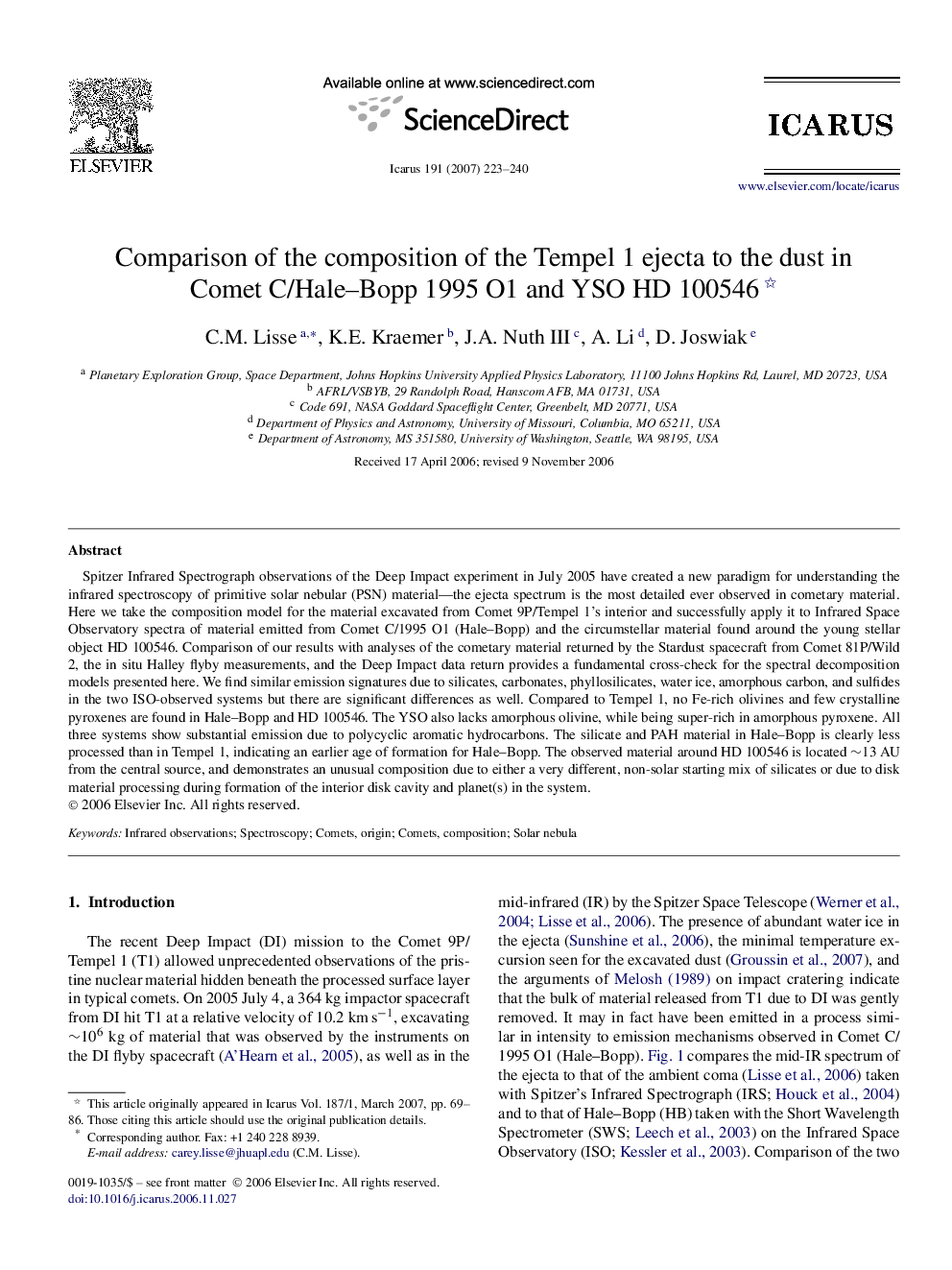| کد مقاله | کد نشریه | سال انتشار | مقاله انگلیسی | نسخه تمام متن |
|---|---|---|---|---|
| 1775247 | 1021188 | 2007 | 18 صفحه PDF | دانلود رایگان |

Spitzer Infrared Spectrograph observations of the Deep Impact experiment in July 2005 have created a new paradigm for understanding the infrared spectroscopy of primitive solar nebular (PSN) material—the ejecta spectrum is the most detailed ever observed in cometary material. Here we take the composition model for the material excavated from Comet 9P/Tempel 1's interior and successfully apply it to Infrared Space Observatory spectra of material emitted from Comet C/1995 O1 (Hale–Bopp) and the circumstellar material found around the young stellar object HD 100546. Comparison of our results with analyses of the cometary material returned by the Stardust spacecraft from Comet 81P/Wild 2, the in situ Halley flyby measurements, and the Deep Impact data return provides a fundamental cross-check for the spectral decomposition models presented here. We find similar emission signatures due to silicates, carbonates, phyllosilicates, water ice, amorphous carbon, and sulfides in the two ISO-observed systems but there are significant differences as well. Compared to Tempel 1, no Fe-rich olivines and few crystalline pyroxenes are found in Hale–Bopp and HD 100546. The YSO also lacks amorphous olivine, while being super-rich in amorphous pyroxene. All three systems show substantial emission due to polycyclic aromatic hydrocarbons. The silicate and PAH material in Hale–Bopp is clearly less processed than in Tempel 1, indicating an earlier age of formation for Hale–Bopp. The observed material around HD 100546 is located ∼13 AU from the central source, and demonstrates an unusual composition due to either a very different, non-solar starting mix of silicates or due to disk material processing during formation of the interior disk cavity and planet(s) in the system.
Journal: Icarus - Volume 191, Issue 2, Supplement, 2007, Pages 223–240